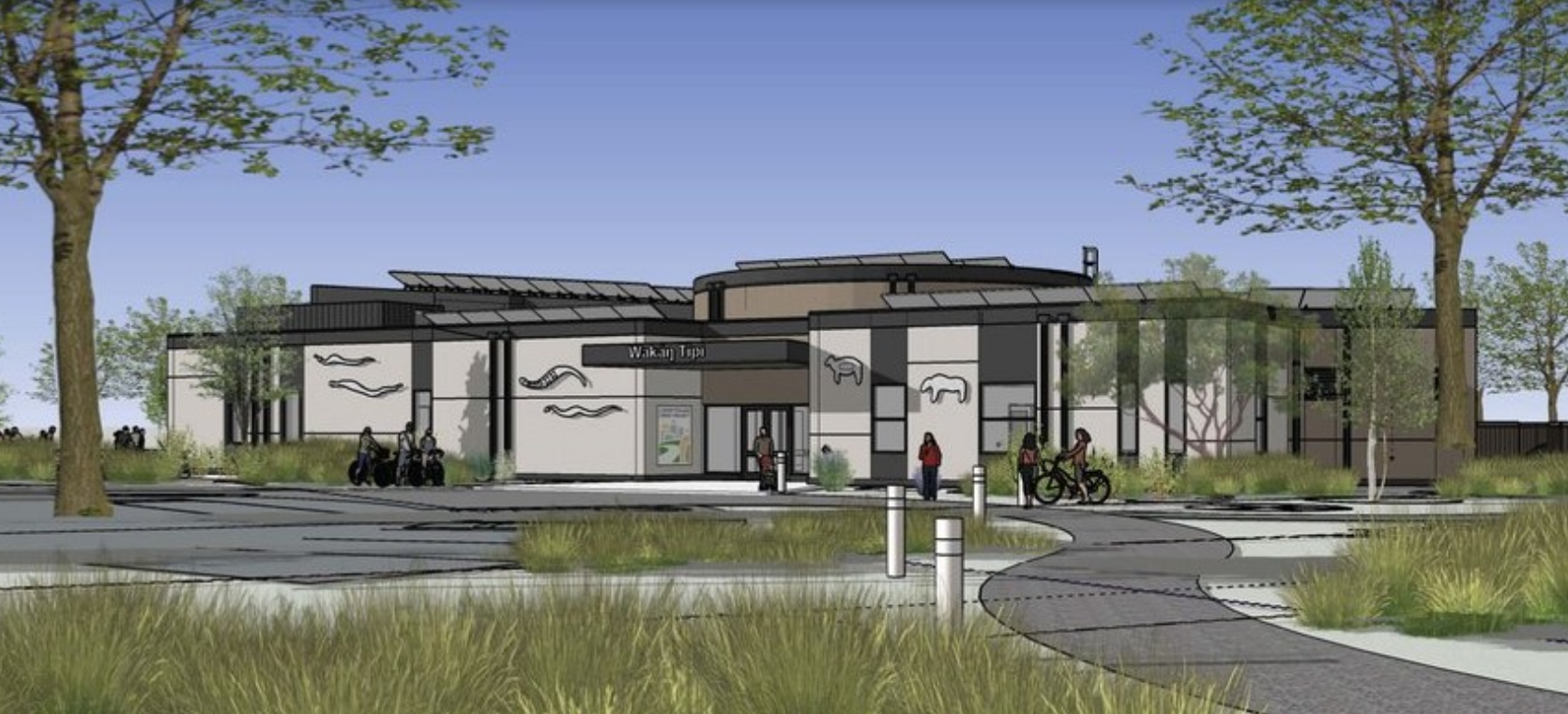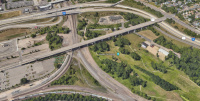Bringing Beauty, Community, and Inspiration Back to Wakan Tipi.
The civil design team at Minneapolis-based BKBM Engineers is actively working to protect one of many sacred indigenous sites in the Twin Cities. Through a partnership with the non-profit Wakan Tipi Awanyankapi (Wakan Tipi), Full Circle Indigenous Planning, and Cuningham Architects (Cuningham), the project team is working to uphold the organization’s goal to honor and care for the Dakota peoples’ sacred site at the Bruce Vento Nature Sanctuary in Saint Paul, Minnesota. This blog post will explore how this design team is working to help preserve our state’s indigenous heritage.
The Importance of Restoring the Sacred Site
The three main goals defined by the organization site include: honoring and protecting the Wakan Tipi (in English, “sacred cave”) site within Bruce Vento Nature Sanctuary; reconnecting the Dakota people to their native land and exploring the history of their people; and elevate and illuminate the lives of contemporary Native American people in the Twin Cities.
The WakanTipi Center will feature an exhibit hall, classroom, ceremony, community gathering area, and teaching kitchen, to showcase and expand the value of the sanctuary as a place for cultural significance, healing, lifelong learning, and inspiration.
Due to the complexities of the site, this project has required the expertise of several site and environmental teams to restore it to its natural beauty. After years of industrial use, including manufactured gas, brewing, oil, and rail, the site has been left with demolished industrial facilities and contaminated soil. BKBM's Civil Engineers have brought the expertise to navigate the site challenges to restore Wakan Tipi to its former beauty.
“BKBM is committed to developing projects that support and empower the people of our community. We understand that it takes a collaborative effort to achieve success and believe that by investing in our neighbors, we can build strong and vibrant communities,” stated BKBM’s Civil Project Manager, Keith Matte.
The Complexities of the Site
Presently, the site is zoned for municipal use, houses the Twin Cities' largest trunk sewer line, an easement for the Kellogg Avenue Bridge, and is within the Mississippi River flood plain. With the Kellogg Bridge reconstruction project scheduled for 2023-2025, the project has had to accommodate shared use of the property during construction. BKBM has worked collaboratively with the many stakeholders of this project to realize the vision on a site with many regulatory and logistic constraints. Stakeholders have included the City of Saint Paul Bridge team, the City of Saint Paul Parks Department, the Metropolitan Council, Wakan Tipi Awanyankapi, the Capital Region Watershed District, the Minnesota Department of Natural Resource, and the Minnesota Pollution Control Agency.
With the site’s historic nature, the project team has had to work to overcome the limitations of this site's historical records, including incomplete record drawings of former sewer infrastructure and incomplete records of former building abandonment; BKBM’s expertise was vital in understanding the site's current conditions and recognizing potential impacts that must be addressed or remediated. This knowledge allowed the team to develop a comprehensive approach to restoring the Wakan Tipi site to its natural beauty.
Several identified site constraints were addressed during the initial design process, including contaminated soils, excess groundwater levels, and the need for an effective stormwater management system. The team worked closely with Landmark Environmental to develop a plan accommodating the known site constraints. However, during construction, contaminated and unusable soils exceeded the expected quantities.
Designing With Quality Data
BKBM converted the design of the stormwater management system from a filtration basin to an infiltration basin. This change saved the project significant money and construction time. BKBM used its expertise to provide an updated site plan that reduced the potential cost to Wakan Tipi and incorporated an infiltration pond system despite the changing conditions.
Finally, our team aimed to adhere to B3 Sustainability Guidelines for Development and constructed a stormwater infiltration pond to meet their required Water Quality standards. This included providing treatment systems to remove 80% of Total Suspended Solids (TSS) and 60% of Total Phosphorus (TP). These changes help to limit the number of nutrients and TSS that flow into the Mississippi River, which has been identified as impaired by the Environmental Protection Agency due to these pollutants.
The Shared Vision for the Wakan Tipi
The new Tipi Center is scheduled to be completed in the Winter of 2024. For more information about the project, visit Wakan Tipi’s site.
BKBM’s Approach
As a Minneapolis-based Civil and Structural Engineering firm, we believe that the best engineering happens when the professionals at BKBM converse with our clients, listening and understanding their project needs and requirements. That's why we work hard to build strong relationships that will enhance our understanding of how our work fits into the broader context of society. With every project, we aim to create something that makes the world a better place; that's why we strive to engage in sustainable and collaborative practices that benefit not only our clients but the environment and people interacting with our projects. BKBM has offices located in Minneapolis, Minnesota, and Denver, Colorado. Interested in learning more about BKBM’s Civil expertise, contact BKBM’s Vice President Kevin Bohl.







